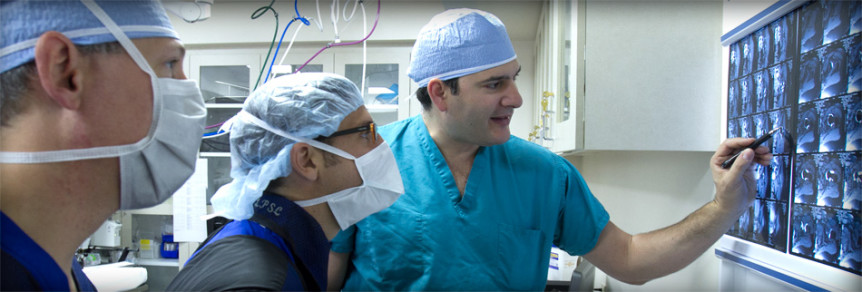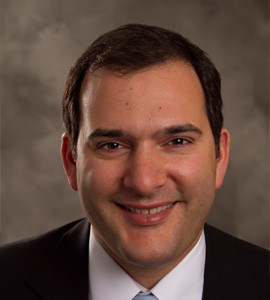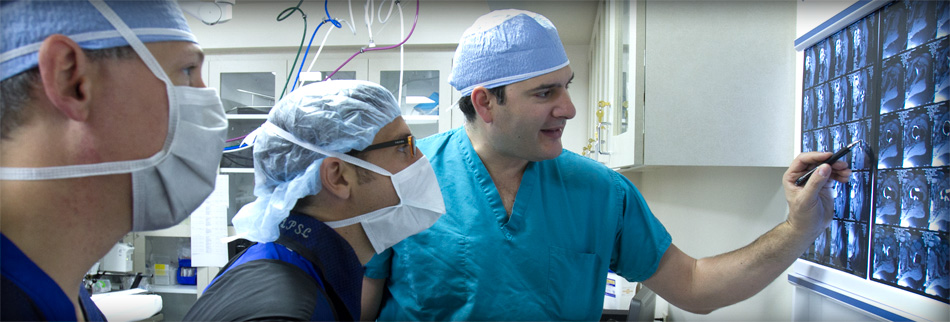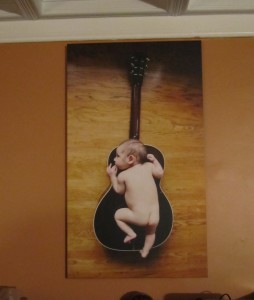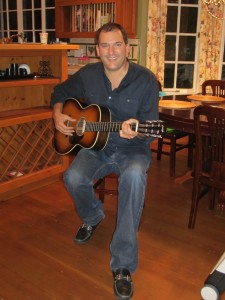Chances are, if you are under 50 and experience sudden, sharp hip pain, you’ll eventually hear the name Jason Snibbe. You may go to an orthopedist in New York, San Francisco, Nashville, Vail, or elsewhere, and you’ll find there’s a close-knit band of young surgeons who are all members of the same group – the International Society for Hip Arthroscopy (ISHA).
In years past, doctors often waited years until patients were bad enough that they needed a total hip replacement. Now we can remodel the bone to prevent impingement and reconstruct the labrum. Those smaller surgeries now can prevent the need for hip replacement in the future.
It wasn’t until 2003 that a Swiss doctor coined the phrase FAI (femoroacetabular impingement), or hip impingement; the surgical instrument companies finally caught up in 2007 and developed longer, curved instruments to get around corners. And in the last six years, there’s been an explosion of new arthroscopic hip surgeries that simply didn’t exist until recently. Marc Philipon, M.D., was arguably the first to focus strictly on these new surgeries and push the envelope on what could be done arthroscopically. He taught Jason Snibbe, M.D. his new FAI and labral reconstruction surgeries.
If you have a hip impingement (FAI), corrections can be made arthroscopically in which the offending bone is removed to eliminate the impingement. The drawings below show the two types of FAI, pincer and cam. The word morphology means the study of form and structure. A lesion is an injury or wound.
If you have a torn labrum, you want to keep it (not have it removed) and have it reconstructed if necessary. Dr. Snibbe now has years of experience in grafting tissue from an iliotibial band or other tendons onto the hip socket in order to rebuild a workable labrum for patients. He is conducting a two-year study with USC on the recovery of such patients and has learned how not to create hip flexor tendinitis following labral reconstruction surgery. The key is to first regain gentle range of motion and rotation in the hip and then focus on strengthening the gluteal muscles.
But let’s start at the beginning. Jason Snibbe was born in Brentwood, California and went to elementary and high school in L.A. As an only child, he wanted to break away from being the center of attention and go away for college, but his parents wanted him to stay in L.A., so he attended USC. But he was determined to be on his own for medical school, so he went to the first school that accepted him, the University of Wisconsin in Milwaukee. “It was the best thing for me,” he said. “I learned to rely on myself since no family was around. I had to do my own laundry, put food in the refrigerator.”
After four years in Milwaukee, my residency director told me he had done his residency at Rochester. He kept telling me that Rochester was probably the best residency in the country as far as training and experience so that I could get into any fellowship I wanted after that. So I met the people there and thought it was great. I was interested in sportsmedicine and Rochester had a strong program, so I selected Rochester and got in.”
The second year at Rochester is known across the country as being the hardest second year anywhere. It was grueling, a lot of hard work, but the kind of hard work where nothing could ever hurt you after that. You could wake me up in the middle of the night and tell me I had to operate, and I would be able to do a 3-hour surgery without blinking, because it made me that strong. It built me a strong foundation.”
After nearly a decade away from L.A., Dr. Snibbe returned home to do a fellowship with Kerlan-Jobe, the doctors who became known in the 1960s and 70s for treating the Lakers and other top athletes. “The best thing was that we rotated with ten different sports surgeons, so we got to see how each did things differently. So when I’m in a surgery and something isn’t working, I think – OK, I can do it this way, the way Dr. Yocum or Dr. Lombardo would do it.”
That kind of broad-based fellowship seemed the best to Dr. Snibbe, so he tells his own fellows, “If you want to do hip arthroscopy, you have to go to New York City and spend time with Brian Kelly; you need to go see Tom Byrd in Nashville, Marc Philipon in Vail, and Tom Sampson in San Francisco. Go spend a day in their operating room and watch them do what they do.” This friendly team of rivals refers patients back and forth depending on the needs of their patients, and they’re helping develop the next set of hip arthroscopists to follow their lead. “I train ten fellows a year. It’s something I’m very proud of, because one of the things that makes them competitive in getting a job is being good at doing hip arthroscopy. It’s the hottest topic in orthopedics today.” Every year, Dr. Snibbe invites his ten fellows to his house for what he calls their Journal Club. “It’s supposed to be a journal discussion, and we do a little of that, but mostly it’s a chance for them to hang out, let their hair down, bring their wives, meet my family, and my wife Yaas cooks for all of us. Then I’ll bring out a few guitars from my acoustic guitar collection and pass them around. One guy will sing a song, then I’ll sing a song, then we’ll play some funny songs like Guns N’ Roses.”
Dr. Snibbe’s guitar collection is extensive. He bought his first Martin guitar after earning money at a summer research job in 1995. Since then he’s added some Gibson guitars, Collings guitars, a custom-made guitar from Koa wood in Hawaii, and a Lowden guitar made in Ireland. Stephen Stills of Crosby, Stills and Nash fame, has become his friend and gave him a 12-string guitar. There’s even a guitar on his wall with a photo of his newborn girl lying on it. “Ours is a house where every room in the house has music and you can program it from your iPhone. Sonos is the app we have on the phone that lets us have music no matter where we are – in the Jacuzzi, pool, bedroom, living room, green room, or kitchen. We have music!”
To tune his guitar, he uses an app on his iPhone called Guitar Tool Kit. He picks a string and twists the tuning knob until the indicator is dead center on the tone line.
Dr. Snibbe’s family tree is most interesting. “Both my parents live in Brentwood and they’re both clinical psychologists. They were divorced when I was five. They both became famous when they wrote a book. Mom is originally from Iran and my father is a blond-haired, blue-eyed American. My mother’s father came to America to learn about irrigation techniques, then when given the opportunity, brought his family from Iran to be educated at the University of Utah, where he earned a graduate degree and taught sociology for thirty years. My father’s father was Richard Snibbe, AIA, a famous architect who was part of a Manhattan firm that designed the tennis stadium and some of the dorms at Princeton University, the U.S. Embassy in India, and other big projects. My dad went to Boston University for undergrad then wanted to explore the Rockies. That was why my parents met at the University of Utah where they both got advanced degrees in psychology.
Today Dr. Snibbe continues to do some advanced shoulder surgeries, but he suspects that over the next years, he’ll evolve into a hip surgeon, A-Z, meaning that he’ll do everything from the smallest to the most complicated hip arthroscopy as well as total hip replacement surgeries. He sees many changes ahead. “Our world is evolving so fast that the way I do hip arthroscopy now is going to change in two years. It could be completely different.”
Regardless of the changes to come, he feels he’s standing on solid ground. “Marc Philipon in Vail taught me how to be a good surgeon technically, but it was Tom Byrd in Nashville who taught me judgment – how to make a good decision on who to operate on and who not to operate on. The patients you don’t operate on are often the most appreciative years later and they come back to thank you, because you made that decision.”
Lynda Huey, M.S., founder of CompletePT and Huey’s Athletic Network, is a former athlete and coach whose own injuries led her into the water to find fitness and healing. She was educated at San Jose State University where she starred on the track and field team during its golden years. Lynda is the author of four books on water exercise and water rehabilitation.

